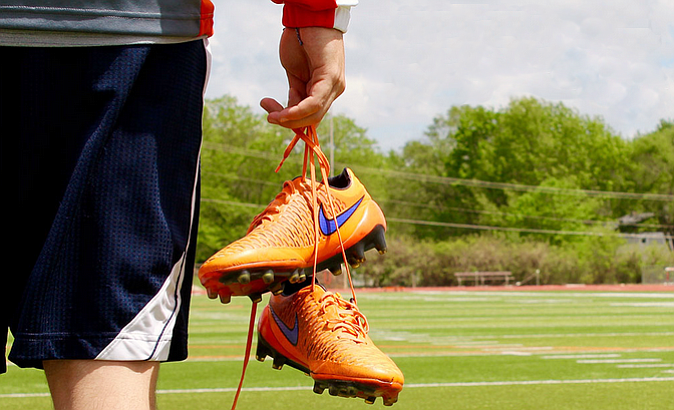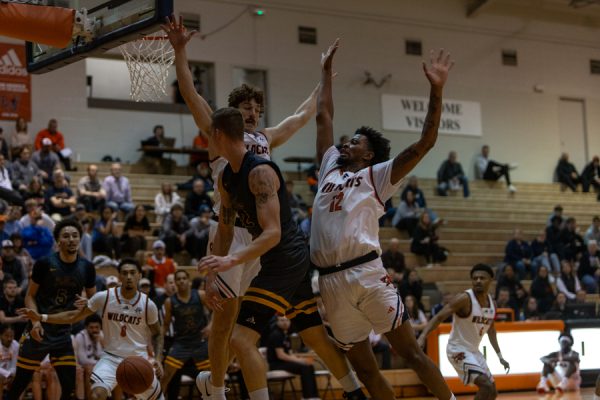Offseason underway for BU athletes
A typical summer morning for baseball pitcher Gage Keisling starts with 30 minutes of yoga before a breakfast full of protein and nutrients that will last him through the day.
After breakfast it’s off to the gym, where cardio, lifting and an abs workout are on the to-do list.
Once he’s finished in the gym, Keisling has some time to himself before heading out to the diamond, where practice consists of first stretching and then playing long toss. Long toss typically includes 30 minutes of throwing, gradually working back as far as he can accurately throw, then slowly moving back in.
After throwing, it’s time to run. Usually a mile is the distance of choice, then it’s back to stretching to finish out the day.
The offseason can be a time of rest and recovery. For some it can be as simple as the season when games and meets aren’t scheduled, but for many BU student-athletes, the offseason can be just as busy and beneficial as being in-season.
Keisling said that summer can provide a much-needed break after spring semester competition, but the desire to play makes it hard to be away from the sport.
“I always make it important that in the summer I don’t throw for a month afterward, because we’re throwing every day from September to May, and so it’s a huge toll especially on my elbow and my shoulder,” Keisling said. “So yeah, at first it’s kind of a relief to relax and unwind a bit, but especially when you’re watching baseball all the time over the summer and stuff, you definitely start to miss it.”
Other sports have short time periods when absolutely no practice is happening. Basketball player Kate-Lynn King has witnessed this firsthand. The women’s basketball team made it to the NAIA National Championship this year, which was held on March 22. After just two weeks, the team began running again.
Offseason can provide a sigh of relief for some but be dreadful for others. For softball player Caitlin Hardgrove, it’s a mixture of both. Not playing as many games is a nice rest, but with no games also comes two-a-days. Hardgrove believes added pressure is put on the offseason, because the work you put in is factored into how you’ll get played once the season starts.
“Our thing is, for our season every day you come out to work you get 3 percent better. I would say in the offseason it’s more like get 6 percent better, because in the offseason you’re working to get a position on the team,” Hardgrove said. “It’s not just all relaxed like ‘oh, let’s work out, I guess.’ It’s probably harder than actual season because you’re competing with all these other girls for spots on the team.”
Not all athletes have the same mindset of working for a spot on the team during offseason. Soccer player Austin Halsey has seen a noticeable difference in the team’s mentality since the fall season ended and offseason has begun.
“It can be frustrating at times for someone like me, who is so competitive, because some guys just don’t care in the offseason, and you can really tell,” Halsey said. “At times it’s very frustrating, but people definitely do not care as much in the offseason even though it’s a time where we need to get used to playing without the seniors that we’re losing and the key players that we’ve lost, and grow as a team.”
Offseason can also be a time of playing catch-up. With less time spent on the road, court or field, student-athletes are able to put more time into the student part of their title. While athletics in college help students learn the lesson of time management, not missing classes for games and having extra time to study can be a big benefit during the offseason.
“So during the season more of the focus is on soccer and it can be more stressful at times,” Halsey said. “Soccer can be a stress reliever for me, which I enjoy, but during the offseason I’m definitely more focused on my classes, and coach always says put school first.”
Hardgrove has become accustomed to spending her weekdays working on homework instead of spending time with friends due to the weekends being a time to travel to games, but she finds offseason in the fall “pretty manageable” because there is a lot of free time in between practices.
Keisling takes precautions when choosing classes during spring baseball season because he knows he will be on the field more often than in the fall.
“As for me, I definitely take a few less hours in the spring, and the way that the classes here at Baker are set up a lot of the classes I need for my major are only offered in the fall, luckily, so I have a tougher schedule in the fall,” Keisling said.
Whether athletes like it or not, they all know the offseason is just part of the game. It may seem inconvenient or less important, but for some the offseason can make a big difference.







